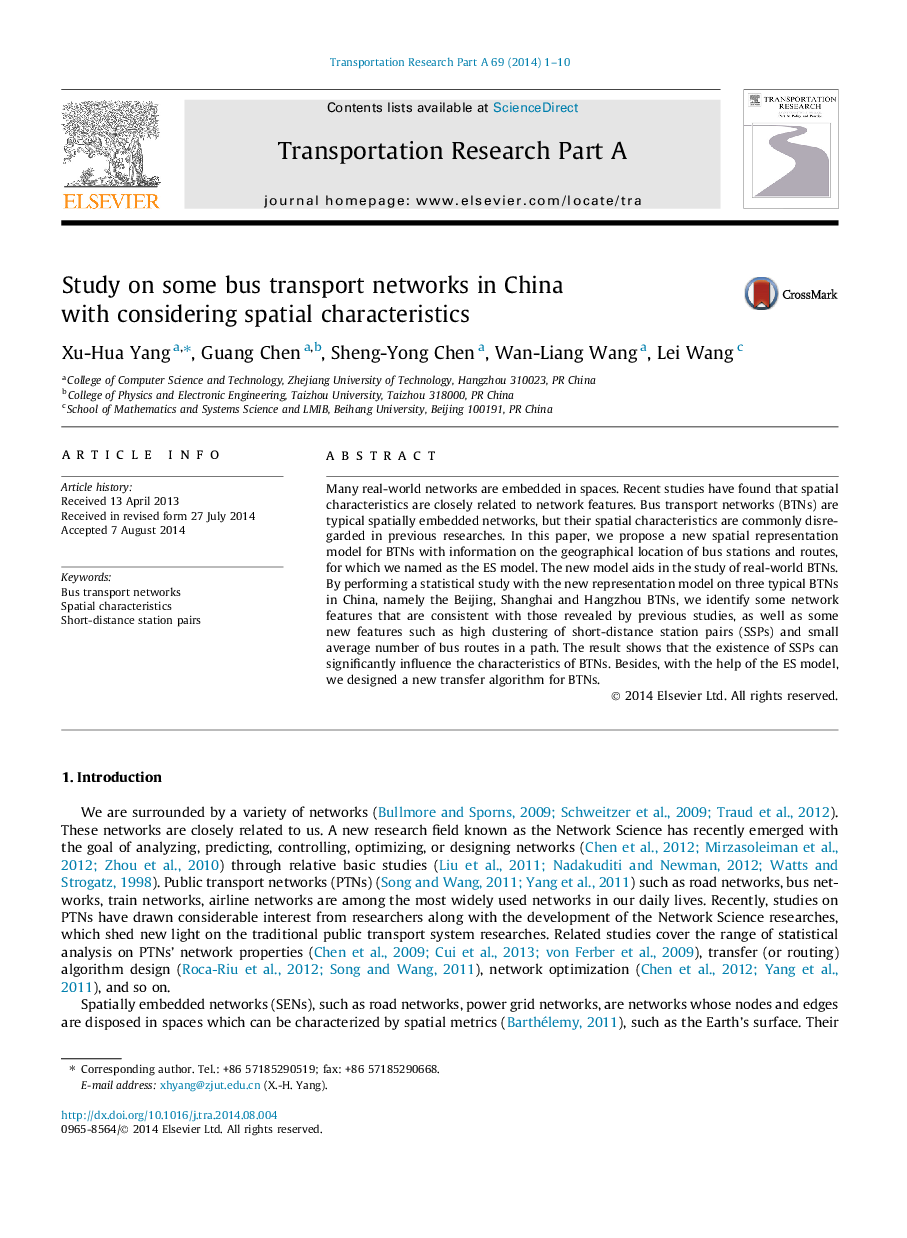| Article ID | Journal | Published Year | Pages | File Type |
|---|---|---|---|---|
| 6781428 | Transportation Research Part A: Policy and Practice | 2014 | 10 Pages |
Abstract
Many real-world networks are embedded in spaces. Recent studies have found that spatial characteristics are closely related to network features. Bus transport networks (BTNs) are typical spatially embedded networks, but their spatial characteristics are commonly disregarded in previous researches. In this paper, we propose a new spatial representation model for BTNs with information on the geographical location of bus stations and routes, for which we named as the ES model. The new model aids in the study of real-world BTNs. By performing a statistical study with the new representation model on three typical BTNs in China, namely the Beijing, Shanghai and Hangzhou BTNs, we identify some network features that are consistent with those revealed by previous studies, as well as some new features such as high clustering of short-distance station pairs (SSPs) and small average number of bus routes in a path. The result shows that the existence of SSPs can significantly influence the characteristics of BTNs. Besides, with the help of the ES model, we designed a new transfer algorithm for BTNs.
Keywords
Related Topics
Physical Sciences and Engineering
Engineering
Civil and Structural Engineering
Authors
Xu-Hua Yang, Guang Chen, Sheng-Yong Chen, Wan-Liang Wang, Lei Wang,
